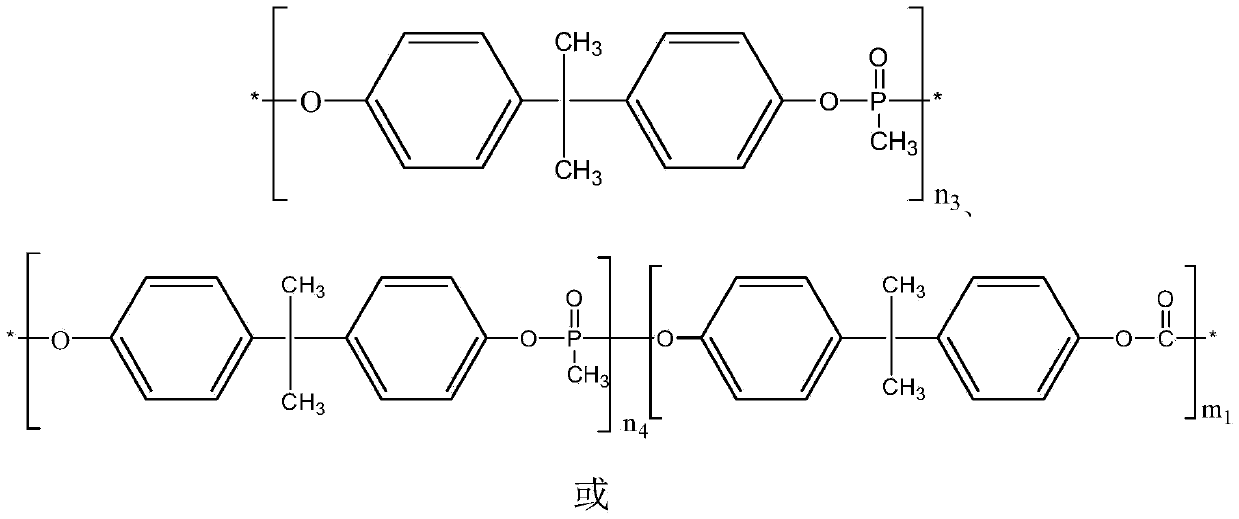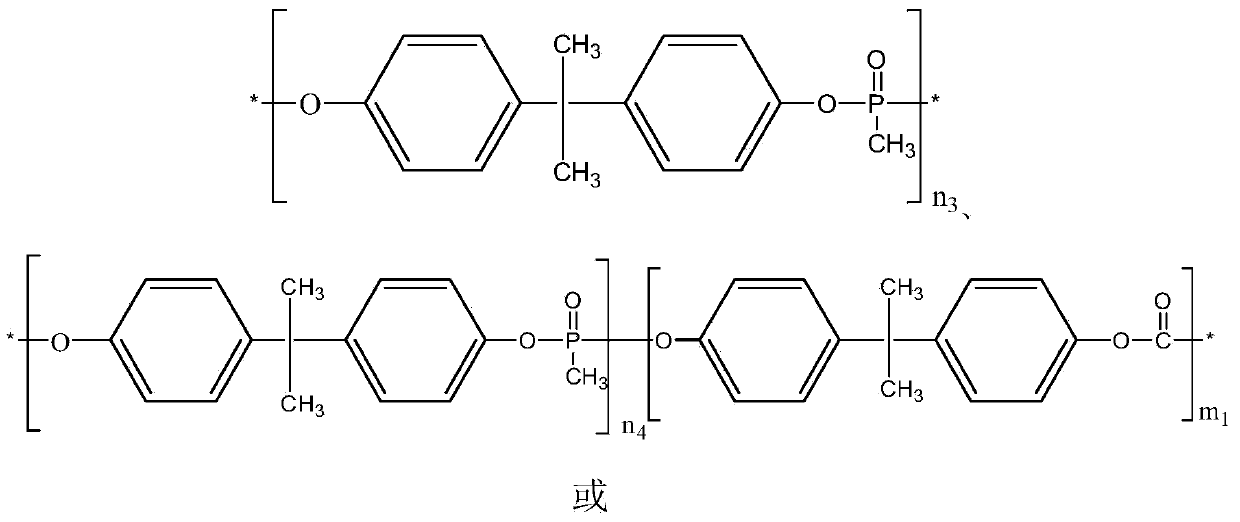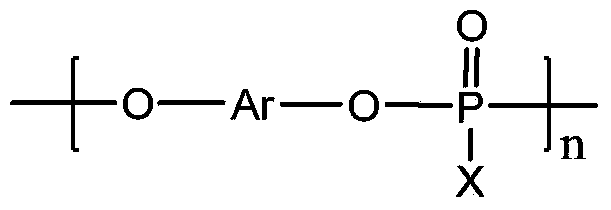Thermosetting epoxy resin composition and use thereof
A technology of epoxy resin and composition, applied in conductive materials, conductive materials, printed circuits, etc., can solve the problems of high hygroscopicity, poor dielectric properties, small molecular weight, etc., and achieve low water absorption, good heat resistance, The effect of high molecular weight
- Summary
- Abstract
- Description
- Claims
- Application Information
AI Technical Summary
Problems solved by technology
Method used
Image
Examples
Embodiment 1
[0087] Take a container, add 100 parts by weight of naphthol type novolac epoxy resin NC-7300L (Nippon Kayaku Corporation, EEW is 214g / eq), and then add 105 parts by weight of active ester curing agent HPC-8000-65T (Japan DIC , solid content 65%) and stir well, then add flame retardant phosphonate-carbonate copolymer FRX HM1100 (FRX Polymers company, phosphorus content is 10.8%) 15 parts by weight, then add 0.075 parts by weight of curing accelerator DMAP, And the solvent toluene, continue to stir evenly to form a glue. Use glass fiber cloth (type 2116, thickness 0.08mm) to impregnate the above glue solution, and control it to an appropriate thickness, then dry to remove the solvent to obtain a prepreg. Use several prepregs prepared by stacking each other, press a piece of copper foil on each side of it, and cure it in a hot press to obtain a copper clad laminate. The curing temperature is 150-250 ° C. The curing pressure is 25-60kg / cm 2 , The curing time is 90min.
Embodiment 2
[0089] Take a container, add 100 parts by weight of naphthol type novolac epoxy resin NC-7000L (Nippon Kayaku Corporation, EEW is 232g / eq), and then add 95 parts by weight of active ester curing agent HPC-8000-65T (Japan DIC , solid content 65%) and stir evenly, then add 65 parts by weight of flame retardant phosphonate oligomer compound OL5000 (FRX Polymers company, phosphorus content is 10.8%), then add 0.075 parts by weight of curing accelerator DMAP, and solvent Toluene, continue to stir evenly to form a glue. Use glass fiber cloth (type 2116, thickness 0.08mm) to impregnate the above glue solution, and control it to an appropriate thickness, then dry to remove the solvent to obtain a prepreg. Use several prepregs prepared by stacking each other, press a piece of copper foil on each side of it, and cure it in a hot press to obtain a copper clad laminate. The curing temperature is 150-250 ° C. The curing pressure is 25-60kg / cm 2 , The curing time is 90min.
Embodiment 3
[0091] Take a container, add 100 parts by weight of naphthol type novolak epoxy resin HP-5000 (Japan DIC company, EEW is 250g / eq), and then add 90 parts by weight of active ester curing agent HPC-8000-65T (Japan DIC company, solid content 65%) and stir evenly, then add 55 parts by weight of flame retardant polyphosphonate compound FRX OL3001 (FRX Polymers company, phosphorus content is 10.0%), then add 0.075 parts by weight of curing accelerator DMAP, and solvent toluene, Continue to stir evenly to form a glue. Use glass fiber cloth (type 2116, thickness 0.08mm) to impregnate the above glue solution, and control it to an appropriate thickness, then dry to remove the solvent to obtain a prepreg. Use several prepregs prepared by stacking each other, press a piece of copper foil on each side of it, and cure it in a hot press to obtain a copper clad laminate. The curing temperature is 150-250 ° C. The curing pressure is 25-60kg / cm 2 , The curing time is 90min.
PUM
| Property | Measurement | Unit |
|---|---|---|
| thickness | aaaaa | aaaaa |
Abstract
Description
Claims
Application Information
 Login to View More
Login to View More - R&D
- Intellectual Property
- Life Sciences
- Materials
- Tech Scout
- Unparalleled Data Quality
- Higher Quality Content
- 60% Fewer Hallucinations
Browse by: Latest US Patents, China's latest patents, Technical Efficacy Thesaurus, Application Domain, Technology Topic, Popular Technical Reports.
© 2025 PatSnap. All rights reserved.Legal|Privacy policy|Modern Slavery Act Transparency Statement|Sitemap|About US| Contact US: help@patsnap.com



